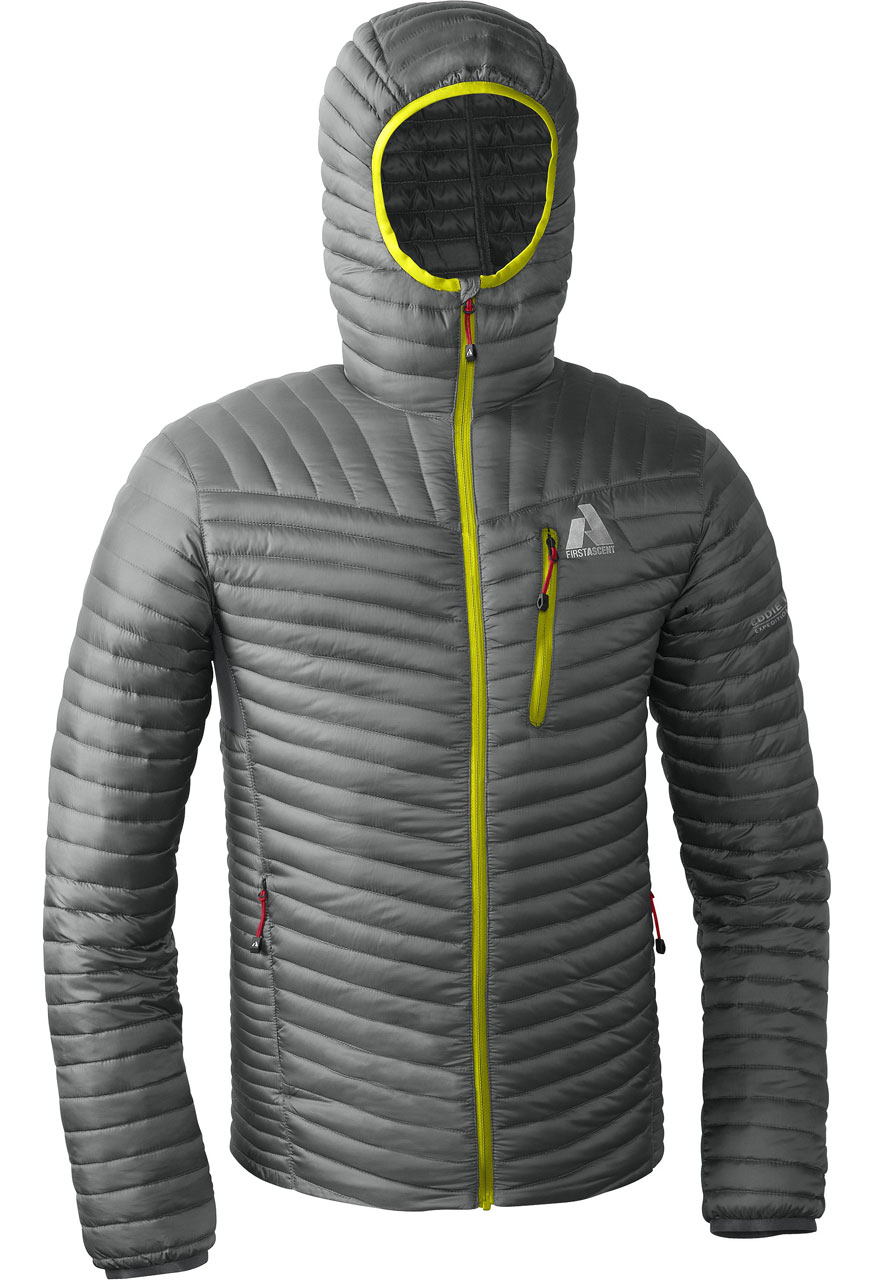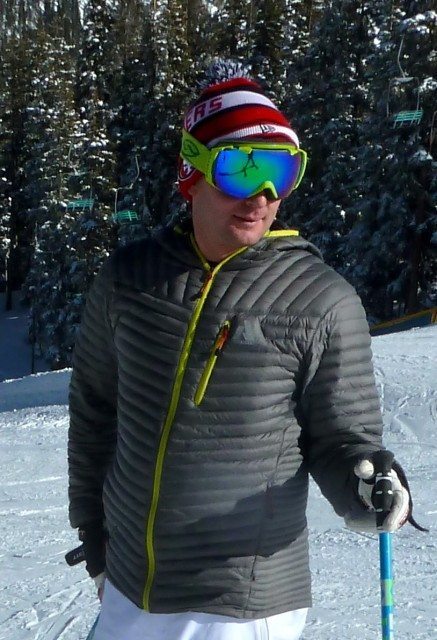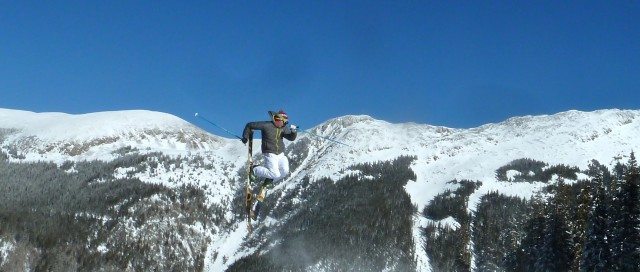 First Ascent MicroTherm Down Hooded Jacket
First Ascent MicroTherm Down Hooded Jacket
Reviewer profile: 5’9” 160 lbs.
Size: Men’s Medium
Color: Cinder
Fit: Active
Features:
- 800 fill premium European goose down
- Water-repellent, windproof shell
- Integrated stretch panels
- Insulated hood
- Extremely lightweight and compressible
- Narrow-channel baffling
- Low-profile hand pockets
- Lightweight and durable zippers
- Active fit designed to fit over baselayers and midlayers
Test locations: Taos Ski Valley; Moab, Utah; Sothern California; arctic and sub-arctic Alaska; extensive day use throughout North America.
Activities: Skiing, hiking, backpacking, commuting, cold-weather field work, shoveling snow.
Days tested: 40+
MSRP: $199 (tall: $219)
Last year I was looking for a lightweight insulating layer that I could wear not just on the ski hill, but for all of my outdoor activities year round. After a little digging, I came across the MicroTherm Down Hooded jacket.
The Eddie Bauer First Ascent MicroTherm Hooded Jacket is an ultralight class of down jacket that provides extremely high-quality insulation in a very lightweight and packable design. Essentially, this down hoody packs the warmth of a traditional mid-weight down jacket but without the “puff” typically associated with the old-fashioned style.
In fact, when I first received the MicroTherm jacket, there was so little “puff” I questioned whether it would provide adequate insulation for cold-weather pursuits. I wasn’t sure whether this was because of the narrow-channel baffling or if perhaps the down was actually less than the advertised “EB 800 fill.” But after a few shakes and letting the jacket hang for 20 minutes, the loft returned, and I was impressed by the light weight of the MicroTherm jacket.
Fit / Sizing
Designed to fit closer to the body and still retain room for layering, the MicroTherm Down jacket has a very comfortable fit for both casual and technical wear. This makes for an easy piece to throw on with layers ranging from just a t-shirt, or a combination of base and midlayer insulation.
The jacket was also easy to take on and off, and extremely comfortable against the skin. The synthetic shell of the jacket is remarkably soft and was able to glide easily over t-shirts, synthetic and wool baselayers, and worked seamlessly with Gore-Tex outer shells.

Overall, the jacket is a true size medium. The bottom of the jacket is not too short or long. It layered well with a variety of shells I have, including some from Patagonia and Flylow, and the only jacket where I noticed under-hang was with an older Arc’teryx Venta SV shell in the same size (men’s medium), though many Arc’teryx jackets are cut for climbing harness compatibility.
I found the MicroTherm hoody to be appropriately tailored throughout the chest, arms, and shoulders to provide complete range of motion. The fit is slightly looser below the chest and into the waist, which provides a comfortable fit that is not too snug. The length of the sleeves is good, with an elastic cuff that is comfortable and does not require adjustment.
Features
The insulated hood, which is also down and provides excellent warmth, works great by itself and especially well under a helmet. It has elastic trim that keeps the hood in place, and when not in use, the hood feels essentially non-existent because of its light weight and ability to compress easily.
The zippers on this jacket are a huge plus. With two side and one chest pocket, each of the zippers are small, lightweight, hidden, easy to slide, and to this day have never snagged when opening or closing. They have proved to be durable despite their small size and low profile.
The zippered chest pocket also offers an internal opening for headphone compatibility.
The MicroTherm Down is also designed with breathable stretch panels under the pit of each arm that extend up and behind the shoulders. These panels allow for some body moisture to escape, and to aid in mobility, but don’t allow cold air to enter. They also don’t catch or bunch under a backpack or outer shell.
To minimize weight, the jacket offers no sizing adjustments along the waist or along the elastic trim on the hood. A waist adjustment would’ve been nice to reduce the chance of wind or snow blowing into the jacket from below, however I didn’t find the absence of this feature to be an issue for retaining heat.
Warmth
My first experience with this jacket was on an April camping and hiking trip to Moab, Utah. The weather was typical for the season: sunny with 50-70˚ F days with crisp nights dipping into the 20s.
Before scouting for camp the first night, I grabbed the MicroTherm Down from the car, slipped it on to offset the chill, and felt my body warm within seconds. Granted, it likely retained some warmth from the car, but the jacket kept me warm the rest of evening and throughout the night. While wearing the hoody later in my sleeping bag (which had barely kept me warm in 40-degree temps the previous autumn), I found myself overheating and removed my socks and the hood despite the temps dropping to the mid 20s.
While hiking and backpacking, the jacket provided warmth, great wind protection, nice ventilation, and worked seamlessly with a backpack. The hood could be worn up, hanging down, or tucked away and be hardly noticeable.
The warmth of the jacket is also apparent when skiing. Throughout the spring, conditions at Taos consisted of cool mornings (~26 to 30˚F), ample sun, and breezy afternoons with intermittent snow squalls.

